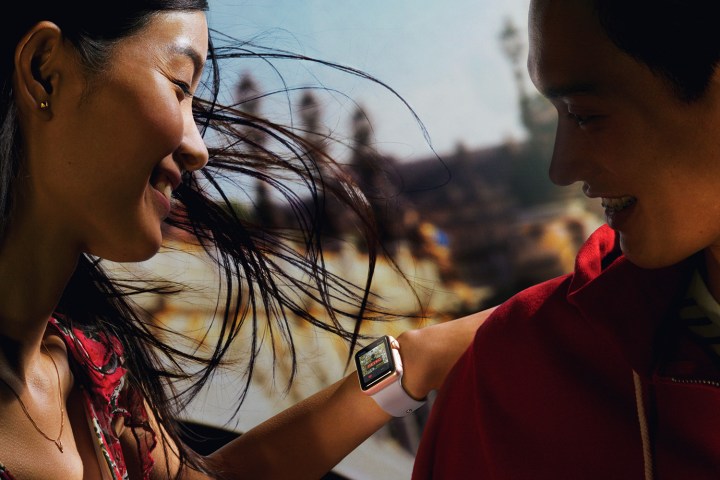
If only there were a way to get the latest and greatest tech toys without all of the upfront cost, at least until you could decide whether they were must-have additions to your tech arsenal or merely flavors-of-the-month that managed to trigger your purchase reflex thanks to awesome YouTube videos.
“We believe that paying for usage instead of ownership is more in sync with today’s consumers.”
There is — it’s just not available in North America yet. It’s called ByeBuy, and as the name kind of implies, it lets you pay month-to-month (or sometimes week-to-week) to use a wide variety of the latest tech toys, with no minimum and they let you cancel at any time. The German company is just barely out of the starting gate, having launched on June 24 of this year — a mere 3 months after being founded — but it already services four major markets: Germany, Austria, The Netherlands, and the U.K.
Unlike so many rent-to-own companies that have earned fortunes (and shitty reputations) by locking low-income families into terrible rental agreements, ByeBuy gives you options. Want to rent an Apple Watch for one month? You can do that, then send it back. Want to keep it for a little longer? No problem.
“We believe that paying for usage instead of ownership is more in sync with the switching interests of today’s consumers,” ByeBuy CEO Michael Cassau tells Digital Trends via email from Berlin. Used it for 6 months and now your realize that parting with it simply isn’t an option? ByeBuy will let you apply 30 percent of that rental cash toward the outright purchase price. These rental “credits” are good only for a year and apply only to purchases (not other rentals).
ByeBuy’s current categories include cameras, tablets, wearables (including the Apple Watch) and even retro gaming for those who want to re-live their SNES glory days without having to compete in dozens of eBay auctions.

Cassau thinks the timing for ByeBuy’s model couldn’t be better. He refers to it as a “pay-as-you-go” system, which has more in common with the subscription models favored by Netflix, Spotify–and now Apple Music–than with traditional rental businesses. “With us, users can switch products at anytime and simply subscribe to technology,” Cassau says. This approach has so many obvious advantages, it’s weird that no one else has done it yet. Well, almost no one has.
US-based Lumoid.com is currently ByeBuy’s closest competitor. It launched in 2014 with a focus on photography equipment (see what I did there?), but has since expanded into wearables. The big difference between ByeBuy and Lumoid, other than gear selection, is a philosophical one: ByeBuy views its service as an alternative to ownership, which is why pricing is done using monthly rates.
Lumoid is especially appealing to people who are trying to decide among a group of competitive products.
“We feel a month is the minimum amount of time to get to properly know the gear,” says Cassau, “to really understand it and to offer you a valid alternative versus owning it.” Lumoid, on the other hand is all about the trial period and structures its prices on daily and weekly rates.
Lumoid is especially appealing to people who are trying to decide among a group of competitive products — smartwatches for instance. For $45, you can try an Android Gear sampler kit for a week, which includes the Moto 360, Asus ZenWatch, LG G Watch and Samsung Gear Live. I’m not sure you could reasonably try all four in seven days, but you might be able to narrow the field to your two favorites, and if so, $45 well spent.
You could accomplish the same thing with ByeBuy, but it would take longer (a minimum of four months), cost more, and you wouldn’t have access to all four products at the same time.
- 1. Moto 360
- 2. LG G Watch
- 3. Android Gear
You rent gear from Lumoid for a very strict trial period, a window that you determine before they send out the goods. You can extend the window by one week for an extra $10 (if it’s a wearable item — photography gear carries different terms), and you need to tell the company that’s your plan, otherwise they’ll ding you an extra $20 on a late return. Another difference between the two companies is shipping. ByeBuy will pay to ship you a product, and you’ll pay to return it — a sort of 50/50 model. Lumoid charges you a shipping fee that includes a free return label. This makes sense given that Lumoid generally expects products to be returned within a short period of time, whereas ByeBuy “subscriptions” could last months or even years.
Both companies let you choose from an assortment of drones, including models from Parrot and DJI, but the price to get one varies enormously. A DJI Phantom 3 Advanced rental from ByeBuy will run you £89.90 (approx. $138.50) per month. To try the most similar product from Lumoid — the DJI Phantom 3 Pro — will cost $50/day with a 3-day minimum ($150 total). It doesn’t take long to see how this math heavily favors ByeBuy for anyone who wants to spend some quality time getting to know a drone. The company even covers the cost of a 50/50 insurance policy (if you ruin a product, you’re only on the hook for 50 percent of its value) — something Lumoid offers only as an optional cost based on the product and the length of the trial period.
U.S. residents who want in on the ByeBuy action won’t have to wait long. Cassau says the company’s current plan is to expand to the U.S. next, “in October, before Halloween this year” — which means you’ll soon have an alternative to the scary sticker prices on your favorite gadgets.






